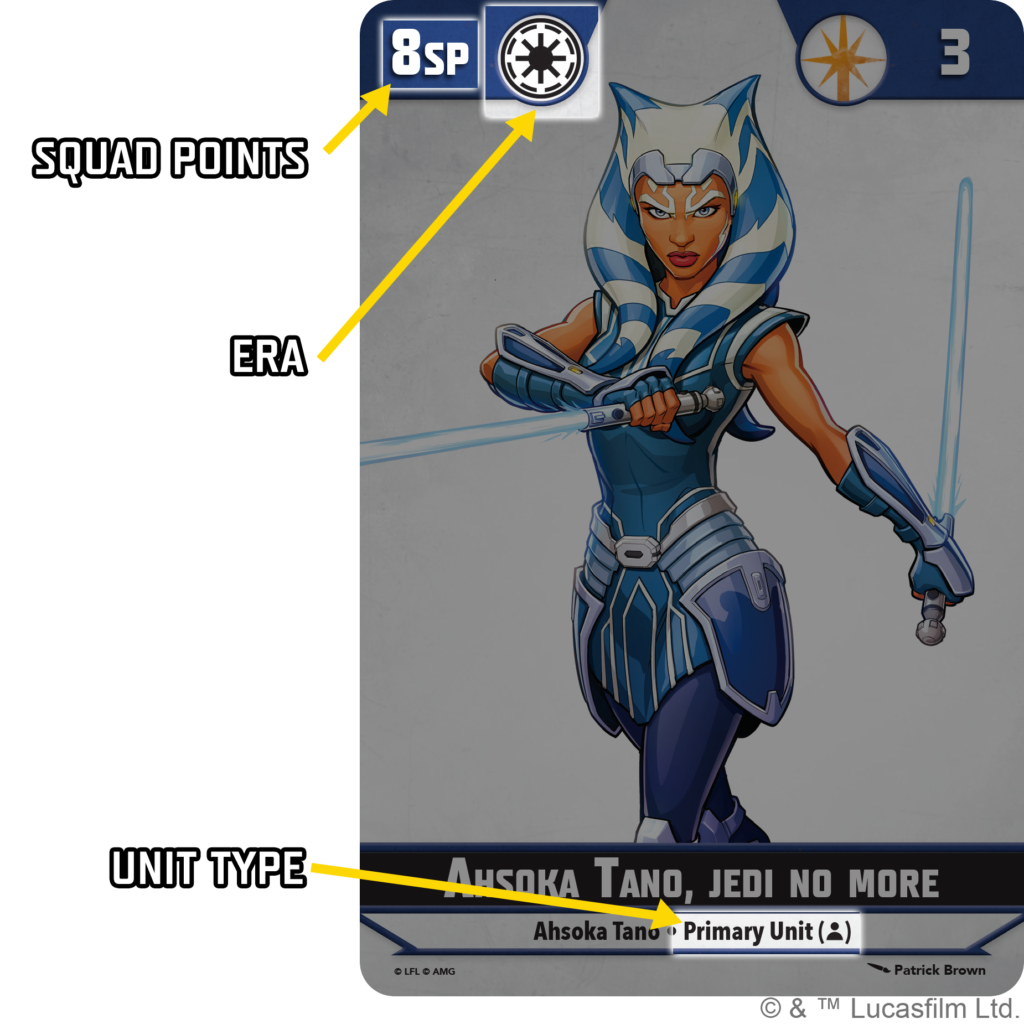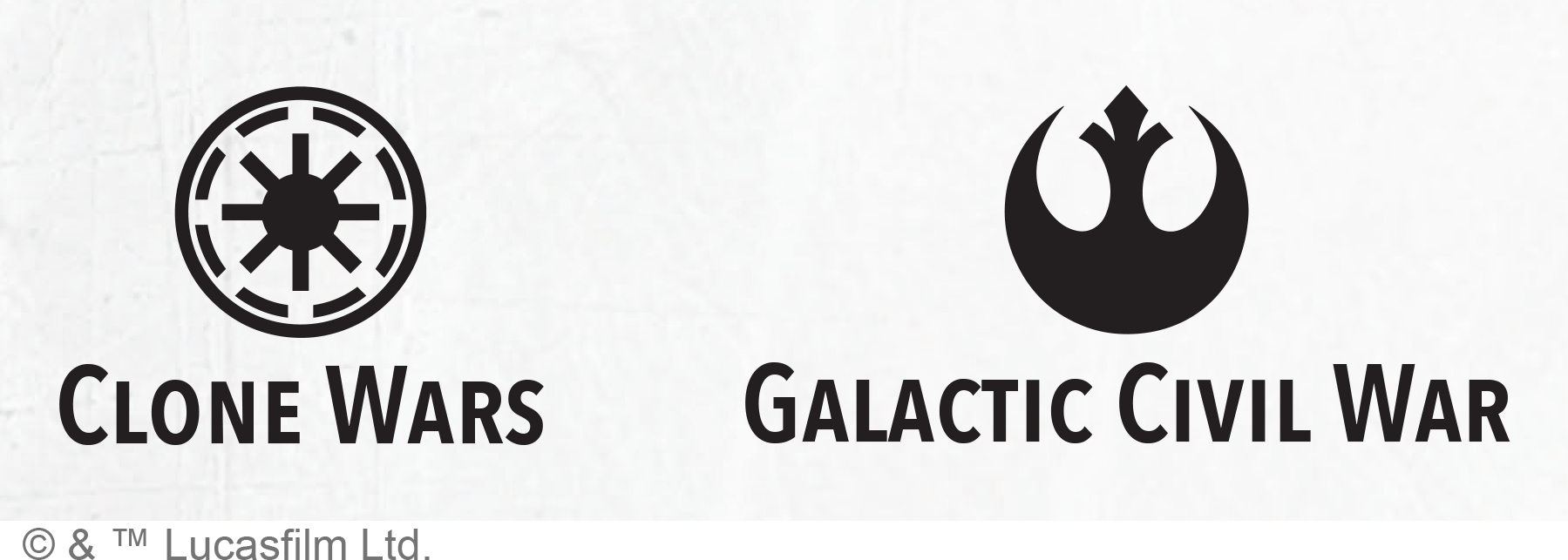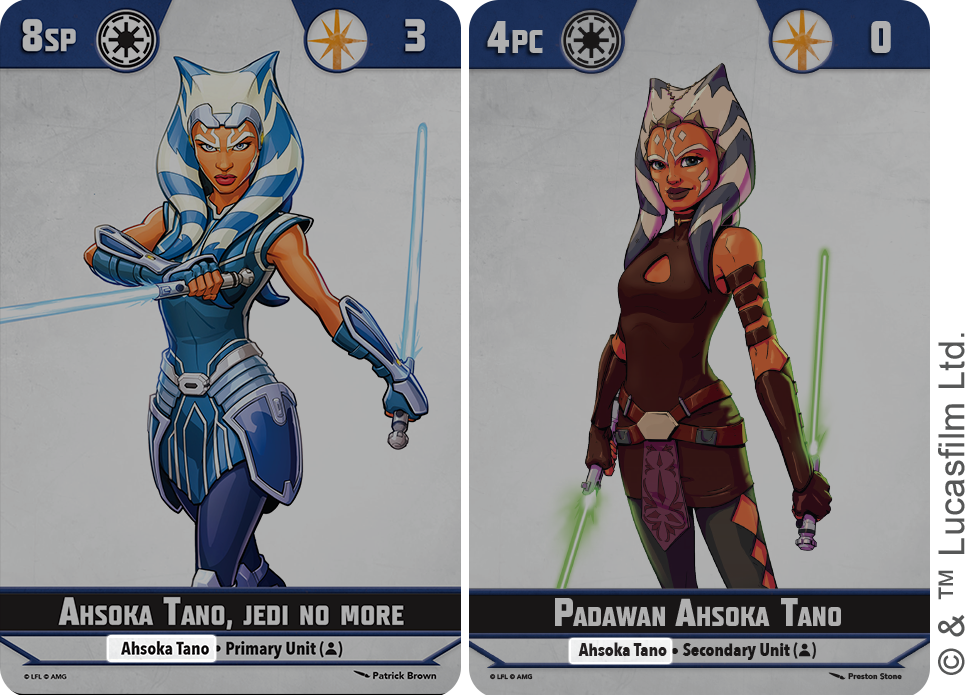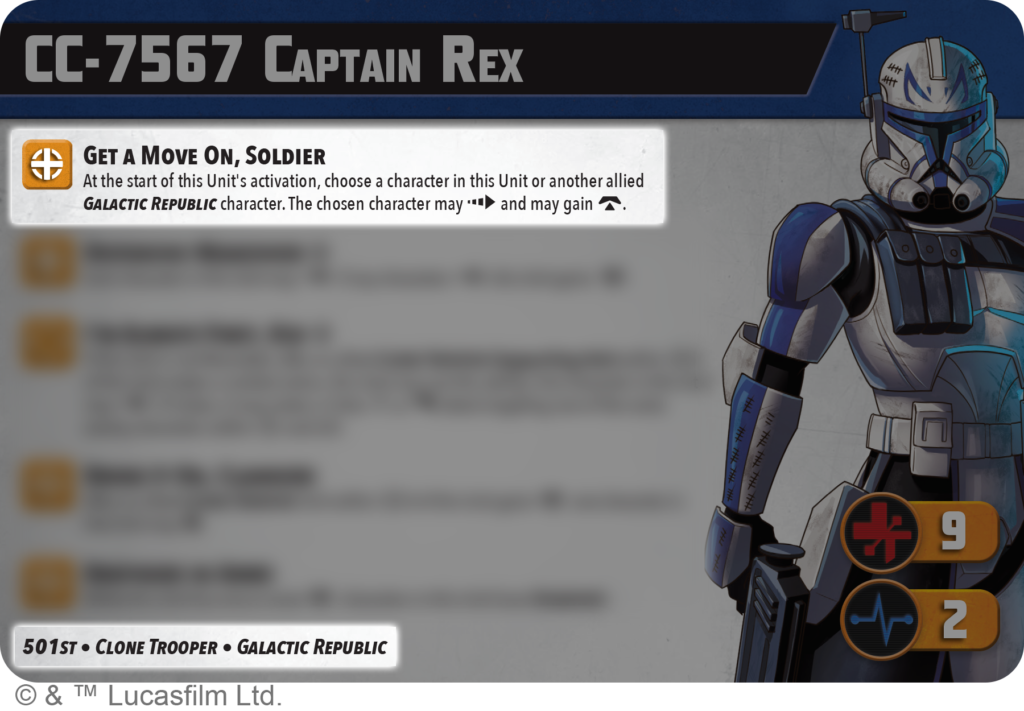STAR WARS: Shatterpoint Squad Building
04/03/2023Welcome to your first steps into the larger world of Star Wars™: Shatterpoint. Over the course of several transmissions, we’re going to be taking a closer look at the core mechanics as we lead up to the world premiere of game demos at Adepticon 2023.
Before we can really start exploring individual game mechanics, we first need to understand the overall concept of what Star Wars: Shatterpoint is. Shatterpoint was conceived and designed to be a character focused, fast paced, high action skirmish game that allowed players to recreate the high stakes, personal confrontations between the iconic heroes and villains of the Star Wars saga. From character design to combat, games of Shatterpoint center on these zoomed in conflicts around which the stories of Star Wars often revolve.
We also wanted to make sure that Shatterpoint conveyed its own distinct style and tone, and what better inspiration and match than the high energy action of great Saturday morning animated series? While the battles in Shatterpoint may be pivotal moments to the story, we wanted players to be immersed in the fun and excitement of the action happening on the table. Combat in Shatterpoint is fast and furious with victory and defeat balanced upon a razor’s edge. But even so, just like any great animated series, there is a distinct understanding that – win or lose – we know all our heroes and villains will be back again next week (or more accurately, next game) to start the battle all over again.
It’s from this point of view that everything we will be looking at in the coming weeks stems from. While this series of articles will be focused gameplay, every aspect of Shatterpoint, from the art style to the miniatures’ designs and poses, right down to the incredible graphic design, is all purposefully created to immerse players in this one-of-a-kind Star Wars experience.
You’ve seen the miniatures. You’ve seen the amazing art. So how does all of this translate into the game itself?
Well, today’s transmission covers the first and probably most important cornerstone of the game: how players select their group of characters to use during games of Shatterpoint.
At its most basic level, in Shatterpoint each player brings a strike team to battle their opponent with. Each strike team is made up of two squads. So, knowing that each player needs to build a strike team out of two squads, let’s dive into the meat of list building in Shatterpoint: building a squad.
The rules for building a squad are fairly simple and allow for players to create highly thematic teams of characters from the Star Wars galaxy, or to create their own dream team of their favorite characters from each of Star Wars’ various eras. No matter how players choose to approach who to include in their squads, every squad follows the same rules for composition. Each squad must include exactly one Primary Unit, one Secondary Unit, and one Supporting Unit. A Unit in Shatterpoint is one or more miniatures that share a common Stat Card. Each individual miniature in Shatterpoint is known as a character. So, a Unit is composed of 1 or more characters. Abilities in Shatterpoint can affect either a Unit, meaning all the characters in that Unit, or just one character, meaning just the single individual miniature.
Units are further defined by its type, which is Primary, Secondary, or Supporting. Primary Units, as the name implies, are the big central characters around which the squad is built. In terms of theme, the Primary characters are the ones the narrative the players create while playing out their game on the tabletop centers on. In the Core Set the Primary characters are Ahsoka Tano, Jedi No More; General Anakin Skywalker; Asajj Ventress, Sith Assassin; and Lord Maul. When building a squad, players must first select a Primary unit to lead it. The choice of Primary Unit serves two critical purposes. First, every Primary Unit has a Squad Point value listed on the back of its Stat Card. The SP value of the Primary Unit determines how many points a player can spend when selecting their Secondary and Supporting Units. The more powerful a Primary Unit is, the less SP it will provide for fleshing out the squad.

As an example, in the Core Set, Ahsoka Tano, Jedi No More has an SP value of 8. So, she can spend a total of 8 points when selecting her Secondary and Supporting Units. Bo-Katan Kryze is a Secondary Unit that costs 4 points. Having selected Bo-Katan, Ahsoka’s squad has 4 points left to use on a Supporting Unit. As luck would have it, Clan Kryze Mandalorians are a Supporting Unit that costs, you guessed it, 4 points. This means the squad has fulfilled its requirement to have a Primary, Secondary, and Supporting Unit and has a value equal to or less than Ahsoka’s allowed 8 SP.

Secondly, the Primary Unit chosen determines the Era that the Secondary and Supporting Units must be chosen from. While Shatterpoint offers players a lot of freedom in mixing and matching their favorite characters, squads are still limited to the Era of their Primary Unit. So, while you can absolutely take General Anakin Skywalker with Gar Saxon and some B2 Battle Droids, you can’t take Anakin with Princess Leia and Stormtroopers, because Anakin is a Clone Wars Era Unit and Princess Leia and Stormtroopers are both from the Galactic Civil War era.

Going back to the example above, Ahsoka Tano, Jedi No More is from the Clone Wars era as denoted by the Era icon on the back of her Stat Card. Therefore, her squad can only include Units that are also from the Clone Wars era. Both Bo-Katan Kryze and the Clan Kryze Mandalorians have the Clone Wars era icon on their Stat cards and therefore can be included in the squad.
Hopefully, it’s pretty clear how important the choice of a Squad’s Primary Unit is as it both defines the overall value of the other Units it must include, as well as which Units are legal to include based on the Era the Primary Unit is from.
HOWEVER…the rules on Eras only apply to the squads themselves. So, players can mix and match their two squads freely. If you want to see General Obi-Wan Kenobi and his 212th Clone join forces with Darth Vader and his Imperial cronies, Shatterpoint’s list-building system does allow you to do that.
The only thing to keep in mind when building your two squads to create your strike team is that you can never include two versions of the same named unit in the same strike team. So, you can’t take Ahsoka Tano, Jedi No More, and Padawan Ahsoka Tano in the same Strike Team because both share the Unique Name “Ahsoka Tano”.

This restriction doesn’t stop at only named characters from the Star Wars galaxy. The no duplicate named Unit rule also means that you can’t take multiples of nameless trooper units either. A player can only ever take one unit of 501st Clone Troopers or B1 Battle Droids in their strike team. This makes even the non-named grunts feel more unique and special to a player’s Strike Team and ensures that each team represents a diverse pool of characters that each bring their own unique abilities and synergies to the table.
Speaking of synergies…
There’s one last item we want to cover that isn’t necessarily a requirement of squad or strike team building but can have a major impact on how players might go about building their Shatterpoint team. While players are free to mix and match traditional heroes and villains from the same Era within their squads and even mix and match iconic characters from different eras of Star Wars, there are benefits to building your strike team or squad within certain themes.
In addition to its Unit type designation, every Unit in Shatterpoint has a number of keywords associated with it known as Tags. Unit Tags include things like Force User, Jedi, Separatist, Scoundrel, and Clone Trooper to name but a few.

While a Unit’s Tags have no inherent rules or impact by themselves, they are super important when it comes to determining if a Unit can be affected by allied, or in some instances enemy, abilities as the vast majority of Unit abilities (which we will discuss more in-depth in a future Transmission) in Shatterpoint specify one or more Tags that the Unit or character must have in order to be affected by the ability. So, while you can put Clone Captain Rex in with your B1 Battle Droids, those B1s aren’t going to be able to benefit from any of his abilities that specify Galactic Republic or Clone Trooper Tags.
All of this boils down to the fact that players who want to maximize their Units’ various abilities and potential synergies will benefit from paying close attention to which Tags are specified in those abilities. A player who chooses to build their squads with multiple Clone Trooper Tagged Units will find it easy to maximize their opportunities in the game to use all the various abilities and synergies built around the various Clone Trooper Units.
Of course, not all Units have the same level of built-in synergy or reliance on being part of a unified Tagged Squad. Even though mixing and matching outside of more thematic groups might mean limiting a player’s ability to optimize their Units’ abilities, the tradeoff of customization, whether from a desire to build and play your own unique dream team of characters or choosing to optimize your force through non-Tag abilities is just as viable an option and can create just as powerful Strike Teams.
And with that, the first in our Star Wars: Shatterpoint Transmissions series comes to a close. Be sure to keep watch for our installment which will cover how Missions work. Pre-order your copy of the Star Wars: Shatterpoint Core Set at your local game store or through the webstore today!